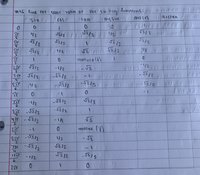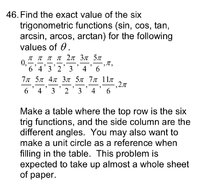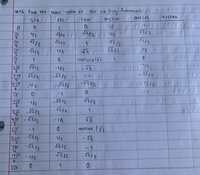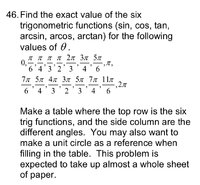
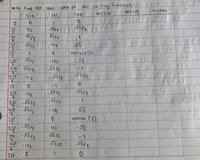
This is the work I’ve been able to complete so far. I was able to find sin, cos, and tan directly off the unit circle, but now I’m stuck with arcsin, arccos, and arctan. In class we have only learned how to find them from values (like 1/2, 0, 1,etc) and not the other way around with angles. I tried to do the opposite by doing arcsin of the values of sin (like arcsin(0) = 0, arcsin(1/2) = pi/6) but i’m not sure if that’s the correct process. Am I heading in the right direction or is there a different way to find arc based on angles? I hope that makes sense, Im a little lost.

